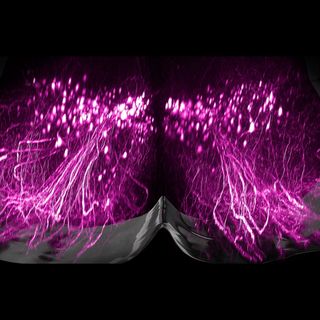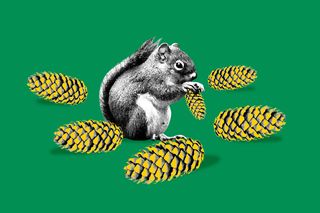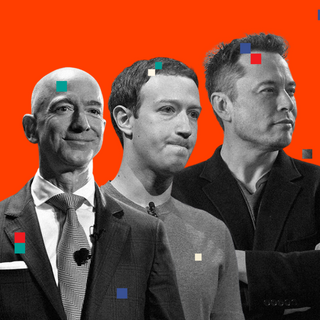
Researchers Discovered Privilege, Wealth Disparities Among Animals Too
Intergenerational privilege is not confined to humans, but studying it in animals can show us how inequality influences evolution.

Animals have privilege too. A study published in Behavioral Ecology in December 2021 found that privilege exists in the animal world as well, where mammals, fish, birds and insects benefit from intergenerational “wealth.” Another review, published in May 2022, showed how human concepts of wealth – made up of material goods, social connections, and individual abilities and knowledge – can be found in operation in animal societies too. Studying generational privilege across species could potentially help us understand how societies evolve – and arguably holds the key to some existential questions about why inequality exists, and how different species respond to and evolve with it.
“Humans pass on material wealth like silverware, a home, or land to the next generation,” said Dr. Jennifer Smith, behavioral ecologist and author of the 2021 study. “Animals do this too.” In North American red squirrels, the mothers pass on their stores of spruce cones and nuts to their daughters – these inherited resources increase their chances of surviving the winter and allow them to reproduce earlier than others. The spotted hyena inherit their social rank from their mothers, in turn gaining access to better food and extending their lineage, while lower-ranked lineages may die out in time. Chimpanzees and capuchin monkeys, meanwhile, not only inherit stone tools from their parents, but also the knowledge of how to use these tools to crack nuts.
Young males in some species of Grouse may gain privileged positions in courtship displays, and therefore mating opportunities, if their fathers are nearby. In the underwater realm, certain clownfish are privileged by birth, where they inherit the right to hide in sea anemones. They are thus, better protected from predators than those born without this right. Moreover, female wasps may inherit their nests from parents and are more likely to reproduce as opposed to “lone” females.
Related on The Swaddle:
India ‘Very Unequal’ Country Where Bottom 50% Own ‘Almost Nothing’: Report
As such, intergenerational transfer of wealth – that comes in the form of “effects of parental care or social networks” as well as the “direct transfer of material wealth” – can drive inequality within family lineages of animals, the researchers noted. “In humans, more unequal societies are often associated with negative individual and societal outcomes,” the researchers wrote. They noted similar instances among animals too.
The research comes at a time when wealth inequalities are steadily rising across the human world. The top 1% of people earn 38% of all wealth created since the mid-1990s, while the poorest 50% hold only about 2% of it.
The big question is: what drives this inequality? Although root causes of inequality may vary across species, researchers hypothesized that social transfer of wealth, intergroup conflict and feedback loops where the rich get richer could be factors operating across species to create greater disparities. Researchers then make a case for studying wealth disparities in animals from an ecological and evolutionary perspective, concluding that understanding “the structural properties of wealth inequality is key to evolution.”
Wealth inequality and its interactions with ecology — such as availability of resources or land — can be highly complex, pointing to a need for a clear framework to identify root causes and consequences of inequality across societies, noted an article in Inverse. In the context of the climate crisis, this becomes stark. While reports suggest climate change has exacerbated global economic inequality among humans, researchers say environmental stressors could be a “broadly acting driver” of inequality across species, underscoring the need for greater research.
However, there are also possible dangers of using such “loaded” terms in the context of animal behavior, where the visibility of privilege and inequality in the natural world might be used to justify the growing disparity in human society. Dr. Smith told The New York Times that their research might be misinterpreted to say, “‘Well, it exists everywhere, so we can do nothing about it.’” However, using a human lens to probe animal behavior might help us answer how inequality and privilege originated, in both animals and humans.
Related on The Swaddle:
New Research Shows Why People in Power Tend To Justify Inequality
Specifically, the researchers note, it could aid in understanding the “deep evolutionary roots of wealth inequality across the Tree of Life,” while also revealing how “multigenerational inequality and its compounding of advantages for some contribute to unequal playing fields across multiple species, including our own.”
“The structure of a society has a lot of different influences on all individuals that live within it. In many cases, the differences between individuals arise from the various ways in which unequal societies affect them. In turn, individuals try to exert control over or navigate these unequal systems in different ways. The biology of animal societies includes these types of dynamics, and we can’t understand the evolution of social animals without recognizing this feedback between the individual and the society,” said Daizaburo Shizuka, an author of the 2022 study.
While behavioral ecologists have expressed hope for unearthing the root causes driving human behavior by studying animal societies, and vice versa, they caution that humans possess social and cognitive traits distinct from animals while human societies are also far more complex. However, what sets us apart is our ability to comprehend and create change. As Dr Smith said, “We’re able to understand this phenomenon… and then explicitly act to choose how we use that knowledge to create social change.”
Ananya Singh is a Senior Staff Writer at TheSwaddle. She has previously worked as a journalist, researcher and copy editor. Her work explores the intersection of environment, gender and health, with a focus on social and climate justice.
Related


How Tech Turned Away From Progressiveness
